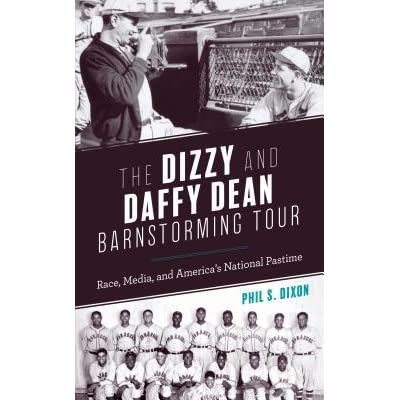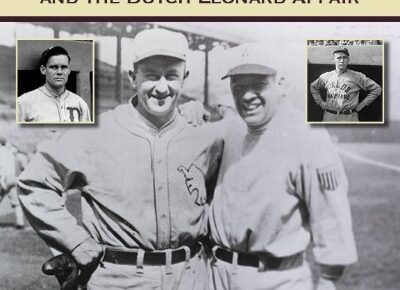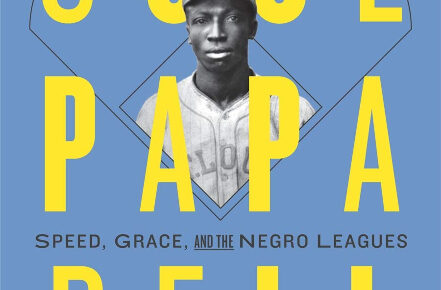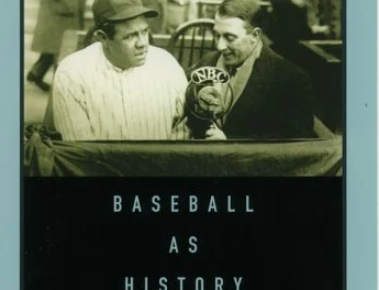On the trip home after passing my Critical Care Emergency Medical Transport Program my wife and I stopped at a humongous book store in Columbus, Ohio called The Book Loft. I, of course, beelined through all the fire hazard death trap tunnels of books to the baseball section. My wife’s gift for passing the aforementioned CCEMT-P class was any book I wanted from the largest bookstore I had ever stepped foot in. That being said, I thought I wasn’t going to get something from the baseball section because nothing really jumped out at me. Until I got to the very last book in the section, The Dizzy and Daffy Barnstorming Tour: Race, Media, and America’s National Pastime by Phil S. Dixon.
I like to consider myself a history buff. That doesn’t mean I’m a researcher, or historian, just that I’m someone who is interested in history and enjoys learning about history in various mediums. Never has it been more clear that I am a baseball history buff and not an actual baseball historian than reading any of Dixon’s works. He’s one of my favorite baseball historians simply due to the minute details and flourishes that populate his work without ever taking away from the bigger picture. When it comes to Negro Leagues historians Dixon is in the upper echelon. However, when you add in taking their research and putting it in prose form there’s Dixon and, well, there’s Dixon.
The Dizzy and Daffy Barnstorming Tour: Race, Media, and America’s National Pastime tackles a subject that most people know about but aren’t well-versed in. Barnstorming is from a bygone era, the only modern equivalent is the barnstorming tour the Savannah Bananas recently embarked upon. Even then, it’s not quite the same. The Bananas are bringing a show as the main attraction with baseball as the backdrop. Old school barnstorming was baseball first and theatrics second. When superstar brothers Dizzy and Daffy Dean embarked on their 1934 barnstorming tour the intention was to make some bucks, but also to win baseball games.
In the first few pages, Dixon hits the reader squarely in the gut. The Dizzy and Daffy Barnstorming Tour: Race, Media, and America’s National Pastime isn’t going to be a simple retelling of the tour but a retrospective look at the way race played a role in the tour and the lives of all those involved. Not just during the tour, but before and after the tour as well. The Deans are the main actors in the narrative Dixon is weaving. It makes sense as it was their barnstorming tour and we know far more about their travels than we do any of the Negro major league teams they barnstormed against. Dixon uses the wealth of information known about the Deans during the tour to provide a stark contrast to the lack of what we know from the tour about their counterparts in color.
There’s little doubt in my mind that Dixon’s approach will leave some readers very unsettled. People generally don’t like to confront racism as starkly as Dixon presents it in his 2019 effort. Especially baseball fans, at least of the caucasian variety, who more often than not would rather sweep the racism of the past under a frug and act like it’s something we should simply get over. Dixon knows this and never lets up. For 230 pages, The Dizzy and Daffy Barnstorming Tour: Race, Media, and America’s National Pastime confronts the reader with the unheralded greatness of the Negro major leaguers. This is intentionally contrasted with the mundane moments of the Dean’s. The tour should have been a chance for the Negro major leaguers to be looked at in the same light, instead, the white newspapermen largely ignored them.
The only place where I’m not sure The Dizzy and Daffy Barnstorming Tour: Race, Media, and America’s National Pastime hit its mark was in the overriding idea that the tour represented a breaking of racial norms by the Deans. This element of the narrative seems overplayed. When it’s approached as an almost unconscious thing that the Deans unknowingly stumbled into doing it very much works. When Dixon tries to tie it together it doesn’t quite work because the Deans never showed the actions of men who know about what they were unconsciously doing.
The last bit aside, The Dizzy and Daffy Barnstorming Tour: Race, Media, and America’s National Pastime is a marvelous work. Yet another example of Dixon’s greatness as a baseball researcher and historian. The stories of the games played are engaging, but they are overshadowed by the racial truths on display. Baseball is America’s pastime, but so is racism. After reading The Dizzy and Daffy Barnstorming Tour: Race, Media, and America’s National Pastime I’m not sure how anyone could ever think differently.
Lead photo courtesy of Unknown – Roman & Littlefield Publishers




